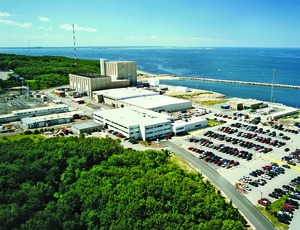
As the U.S. nuclear industry has begun to understand what happened at the Fukushima Daiichi nuclear plant following the March 11 earthquake and tsunami, it is ramping up to harden plants here to ensure that they would withstand a one-two punch similar to what struck the Japanese nuclear plants.
In October, the Nuclear Regulatory Commission issued a prioritized list of recommendations for analysis and improvements at U.S. plants. The first tier of those recommendations are to be implemented "without delay."
In July, an NRC task force concluded that while a Fukushima-like event is unlikely here, U.S. utilities should take mitigating steps and "reduce the likelihood of core damage and radiological releases."
That first tier of work alone could mean tens of millions of dollars in new work at each of the nation's 104 nuclear units, depending on the outcome of analyses at each unit, says Mike Wadley, director of business development for nuclear services for Black & Veatch, Overland Park, Kan. The NRC said in a memo to its staff that modifications should "be flexible and able to accommodate a diverse range of circumstances and conditions."
"Will there be changes?" Wadley asks. "Most likely, yes, but the extent and type will depend on … analytical work." While some nuclear plant owners have purchased equipment to improve emergency response capabilities, major changes are still months off, he says.
Quakes and Floods
The near-term recommendations from the NRC include reevaluating seismic and flood hazards, station blackout procedures, hardening vents on Mark 1 and Mark 2 boiling-water reactors, adding instrumentation to spent-fuel pools and strengthening and integrating emergency operation procedures and preparedness.
"I think [the NRC] has a pretty encompassing view of what needs to be done," says Adrian Heymer, senior director of strategic programs for the Nuclear Energy Institute (NEI), a Washington, D.C.-based industry group. "I think they've captured most of the issues."
The U.S. already has carried out much of the work that other countries began after Fukushima, Heymer says, because the NRC updated emergency operating procedures, accident guidelines and protocols following 9/11.
The first tier of new work is expected to begin within 12 months and last four to five years. NRC Chairman Gregory Jackzo has challenged the industry to complete the work by 2016, says Heymer.

Post a comment to this article
Report Abusive Comment